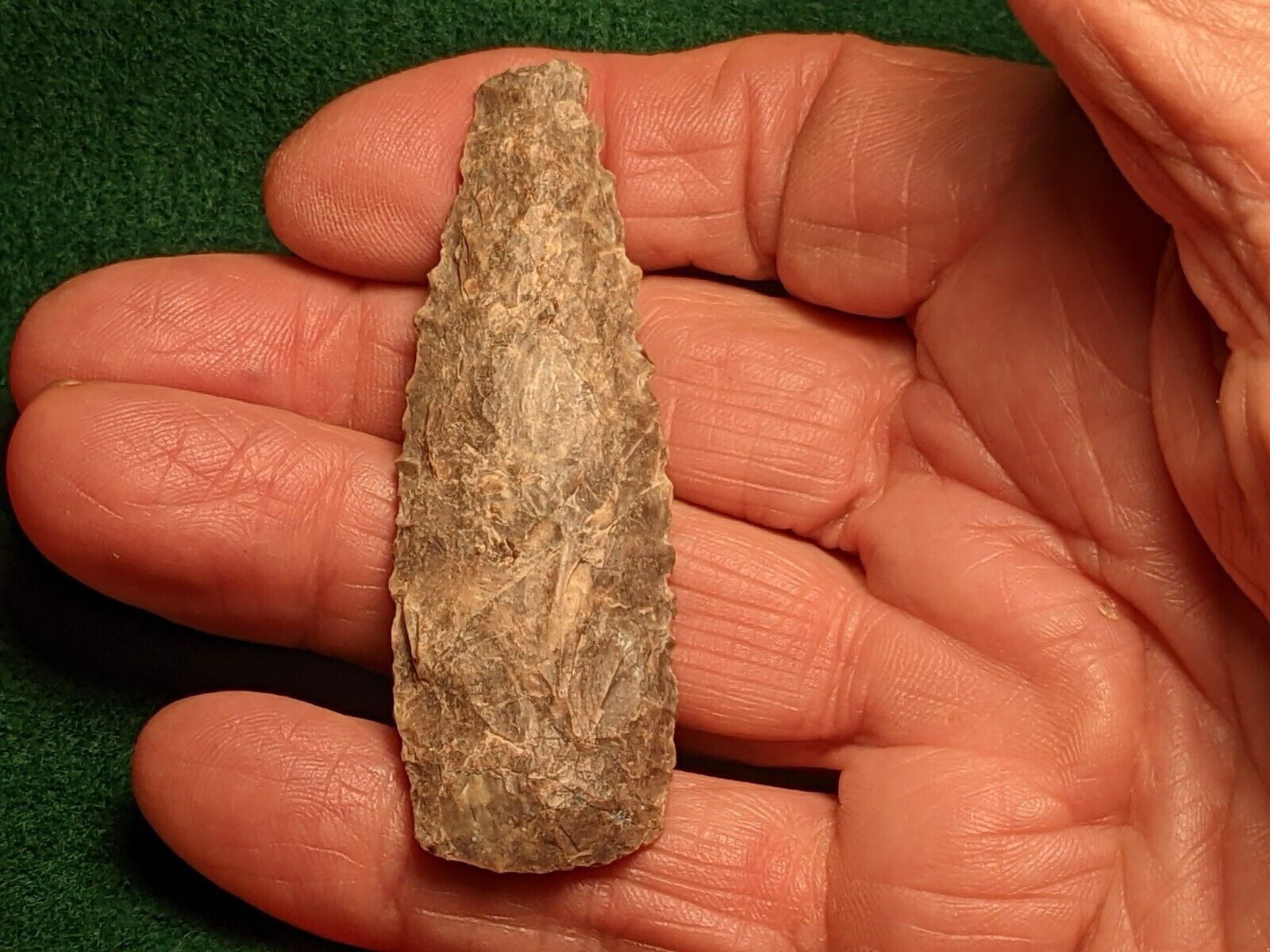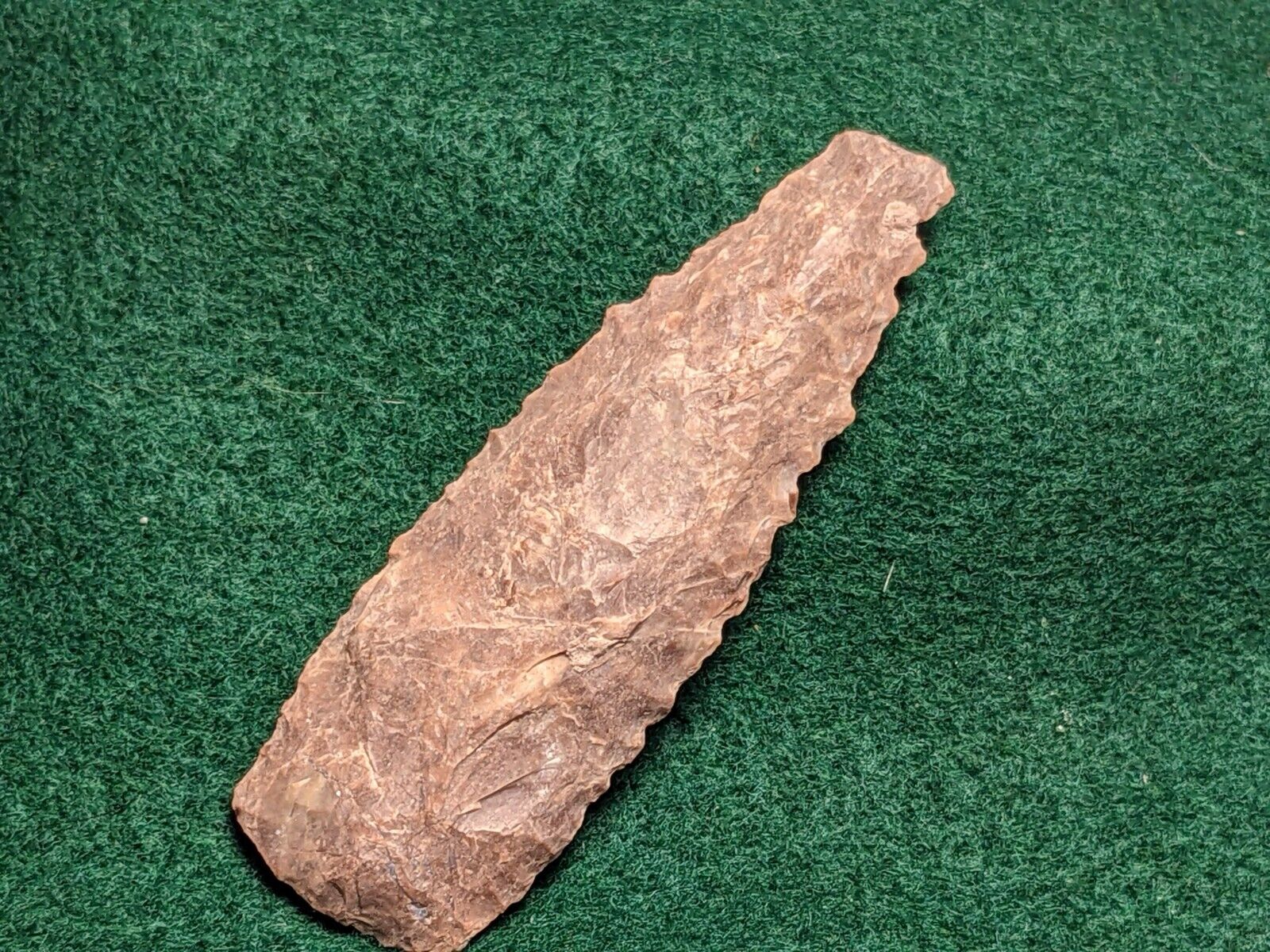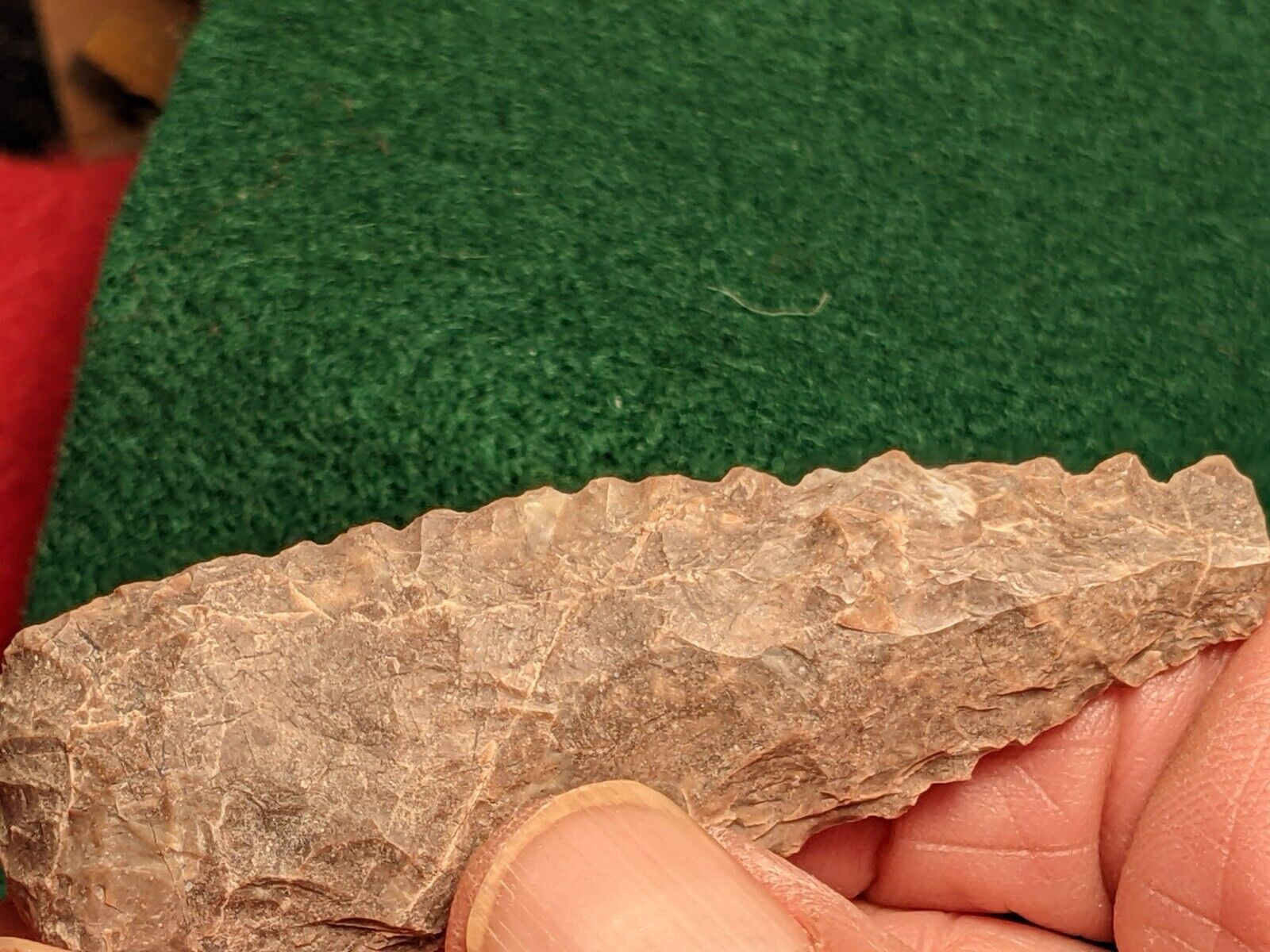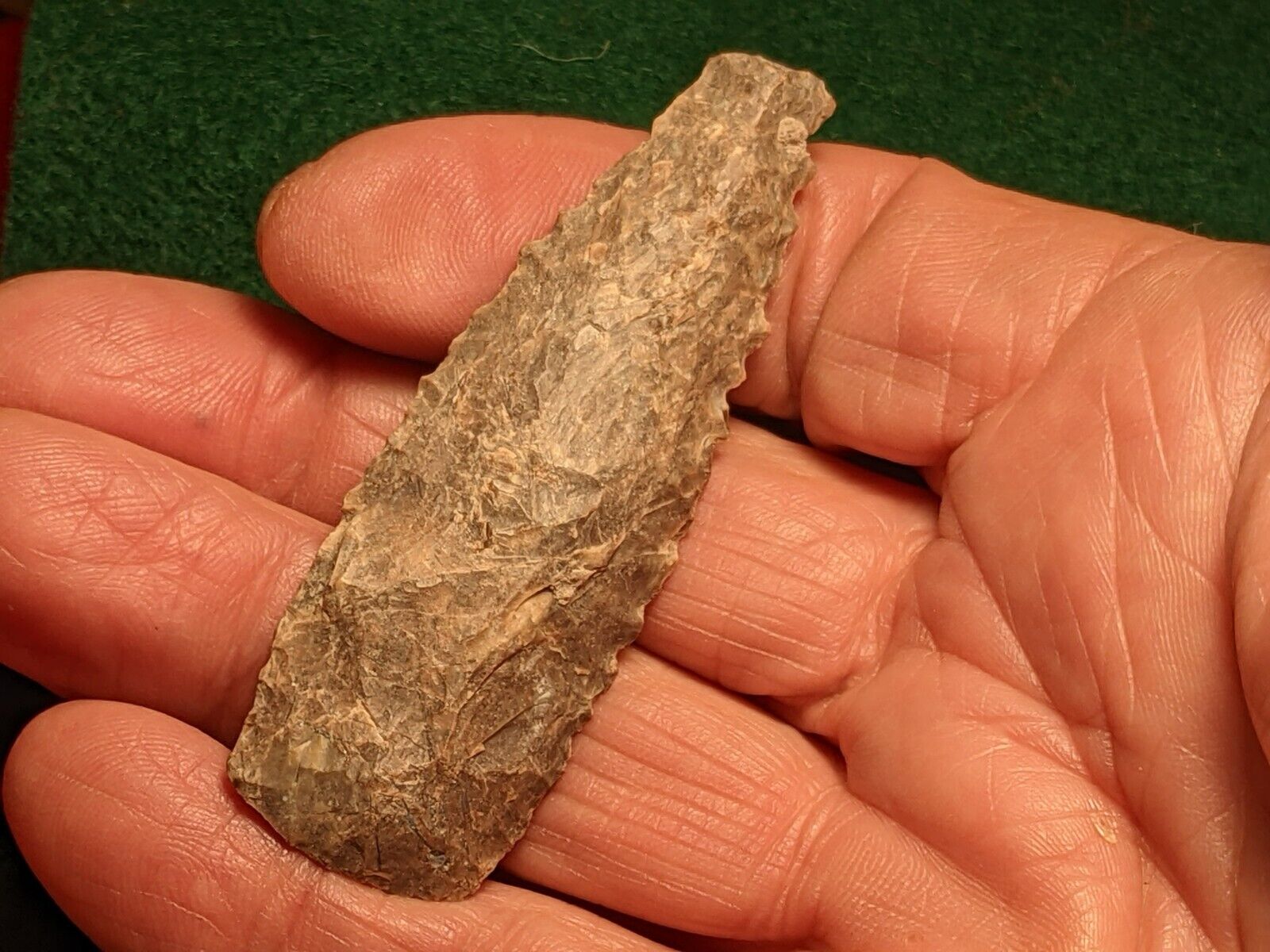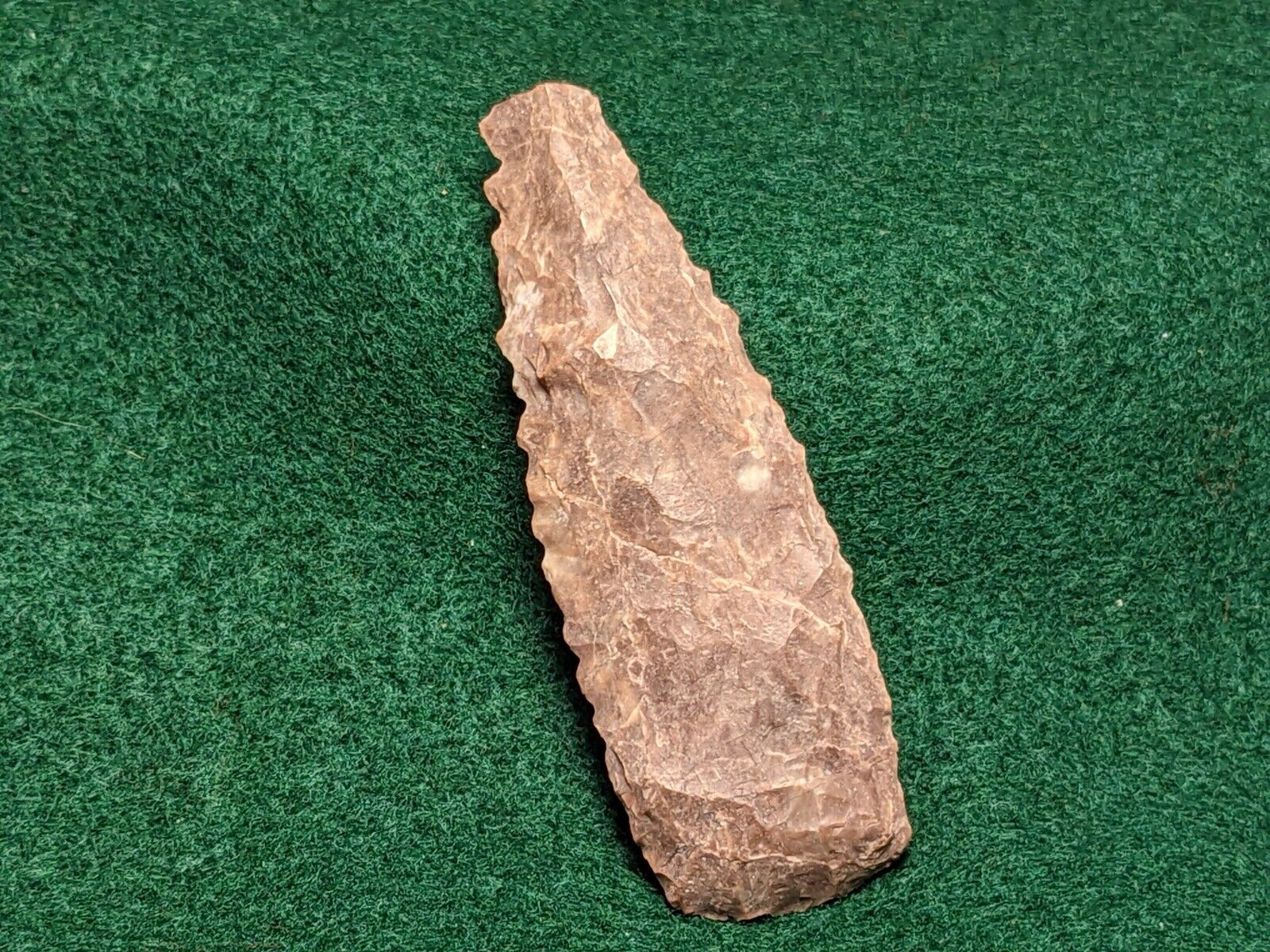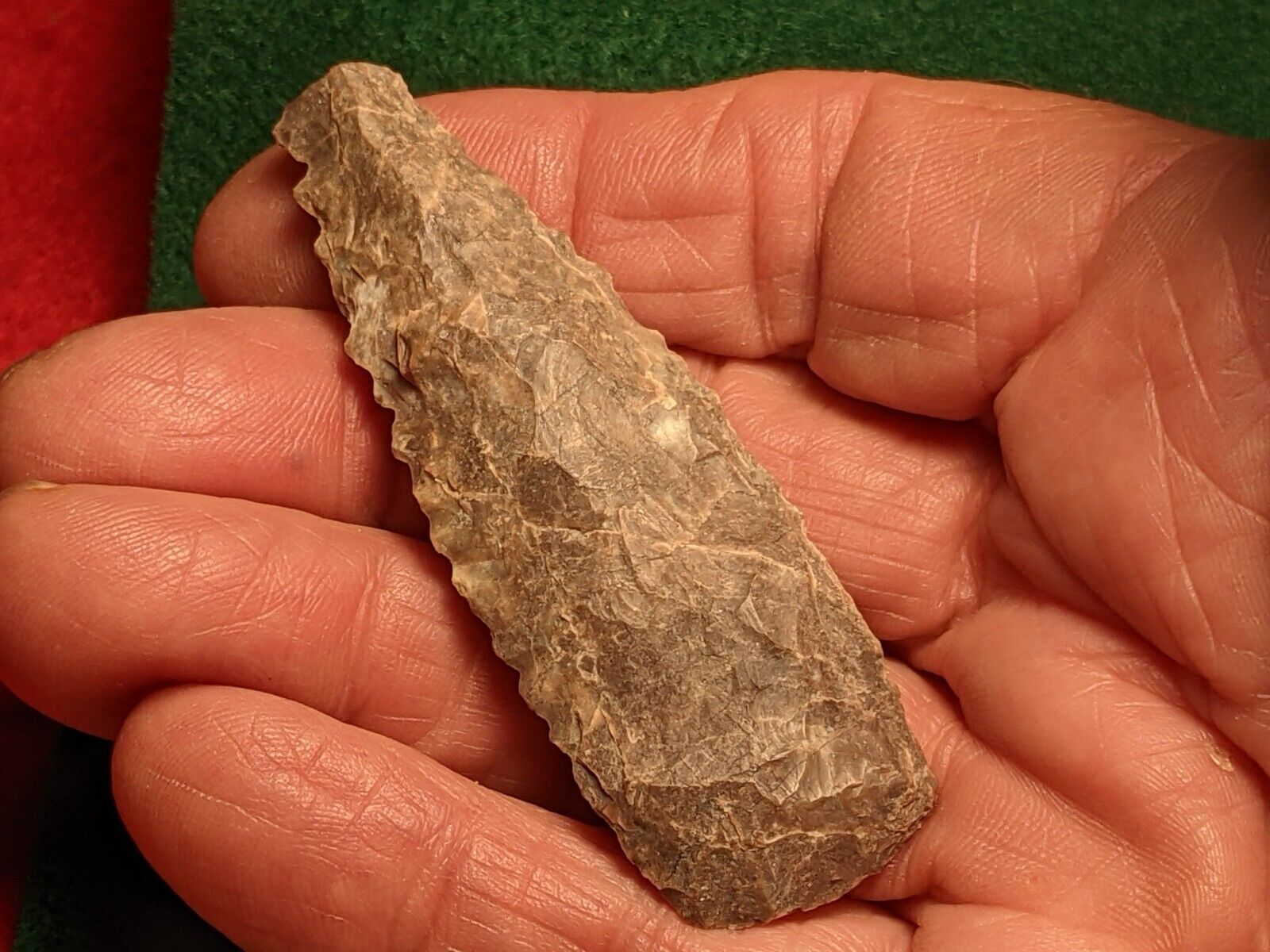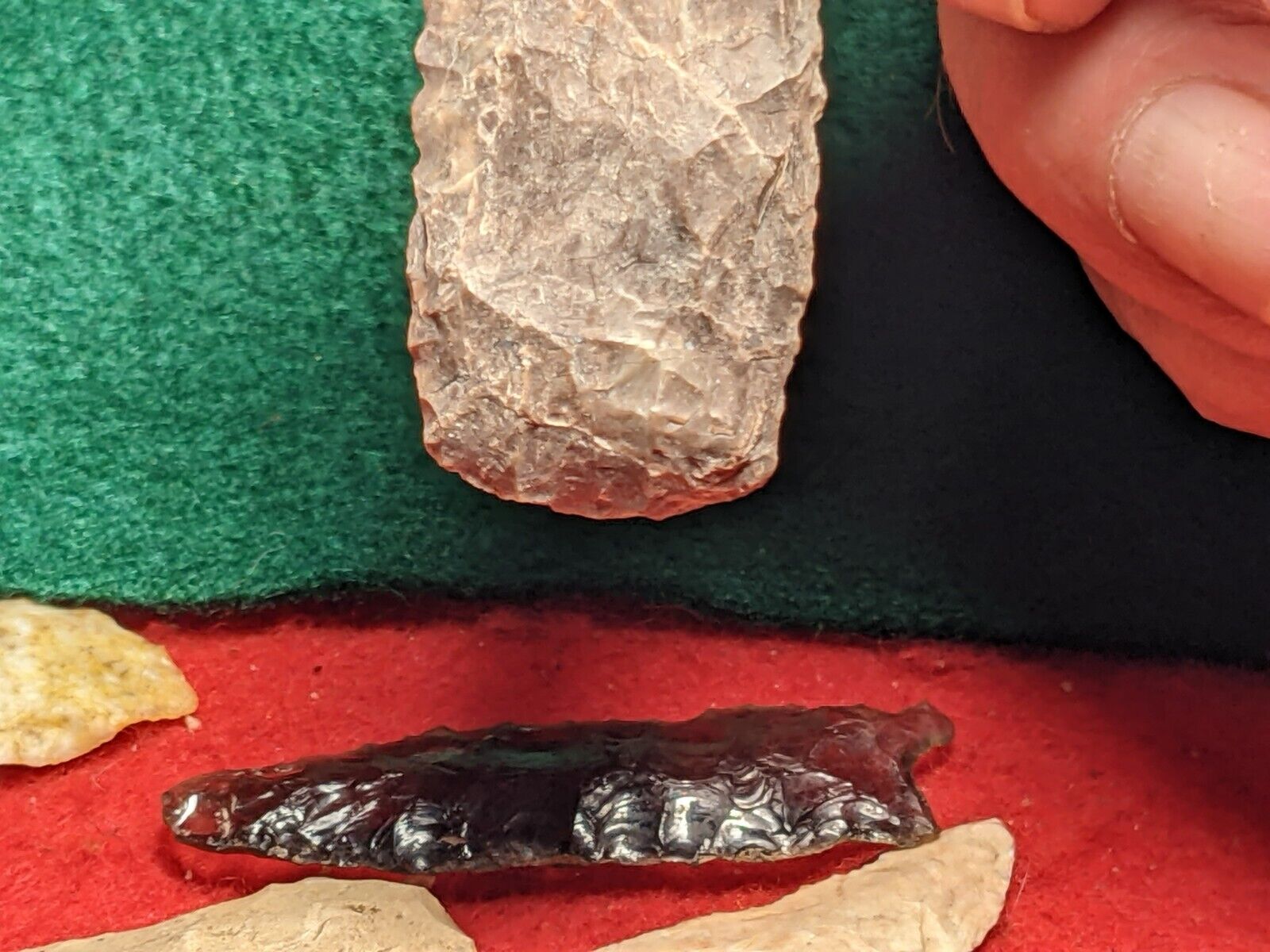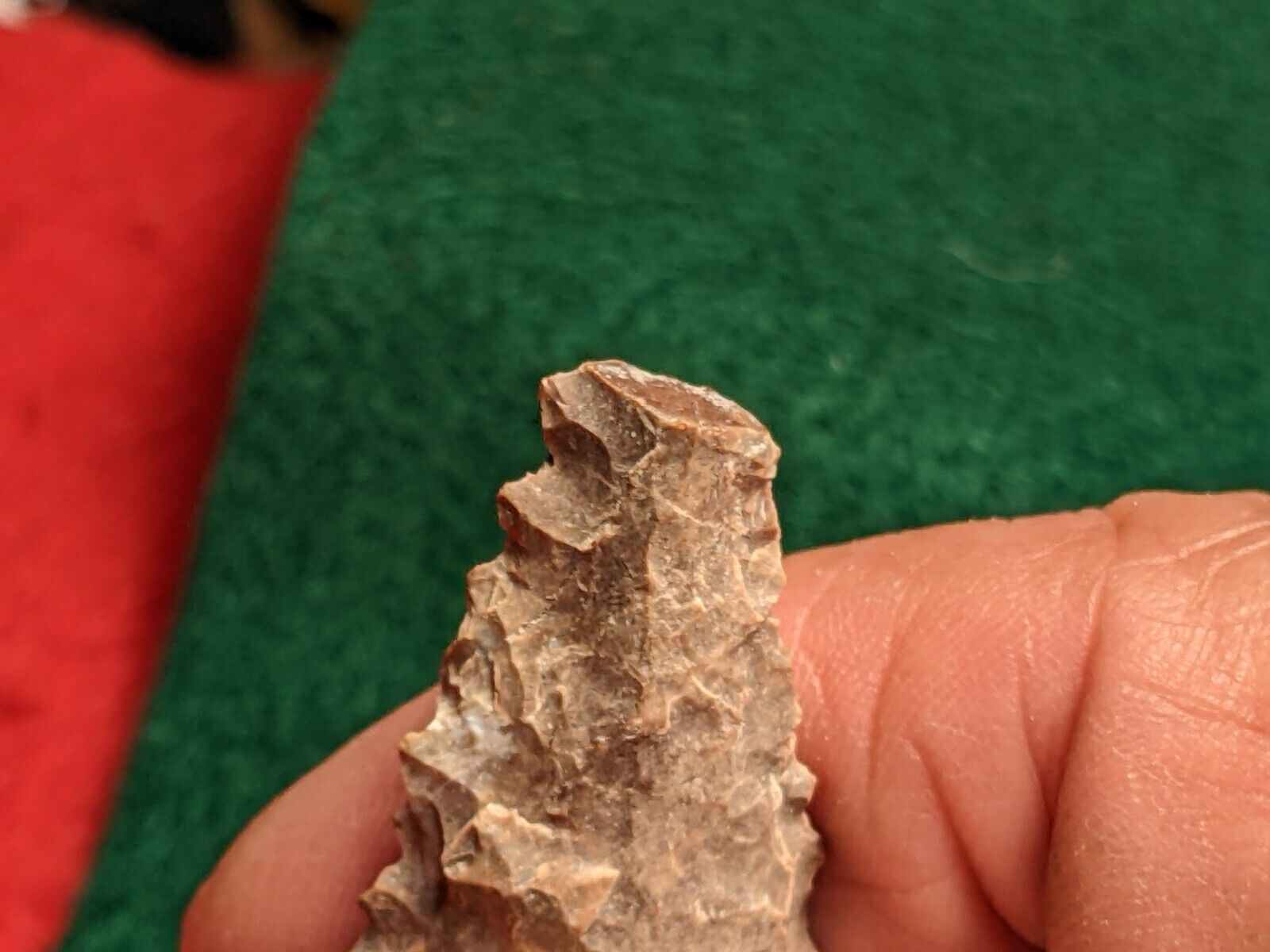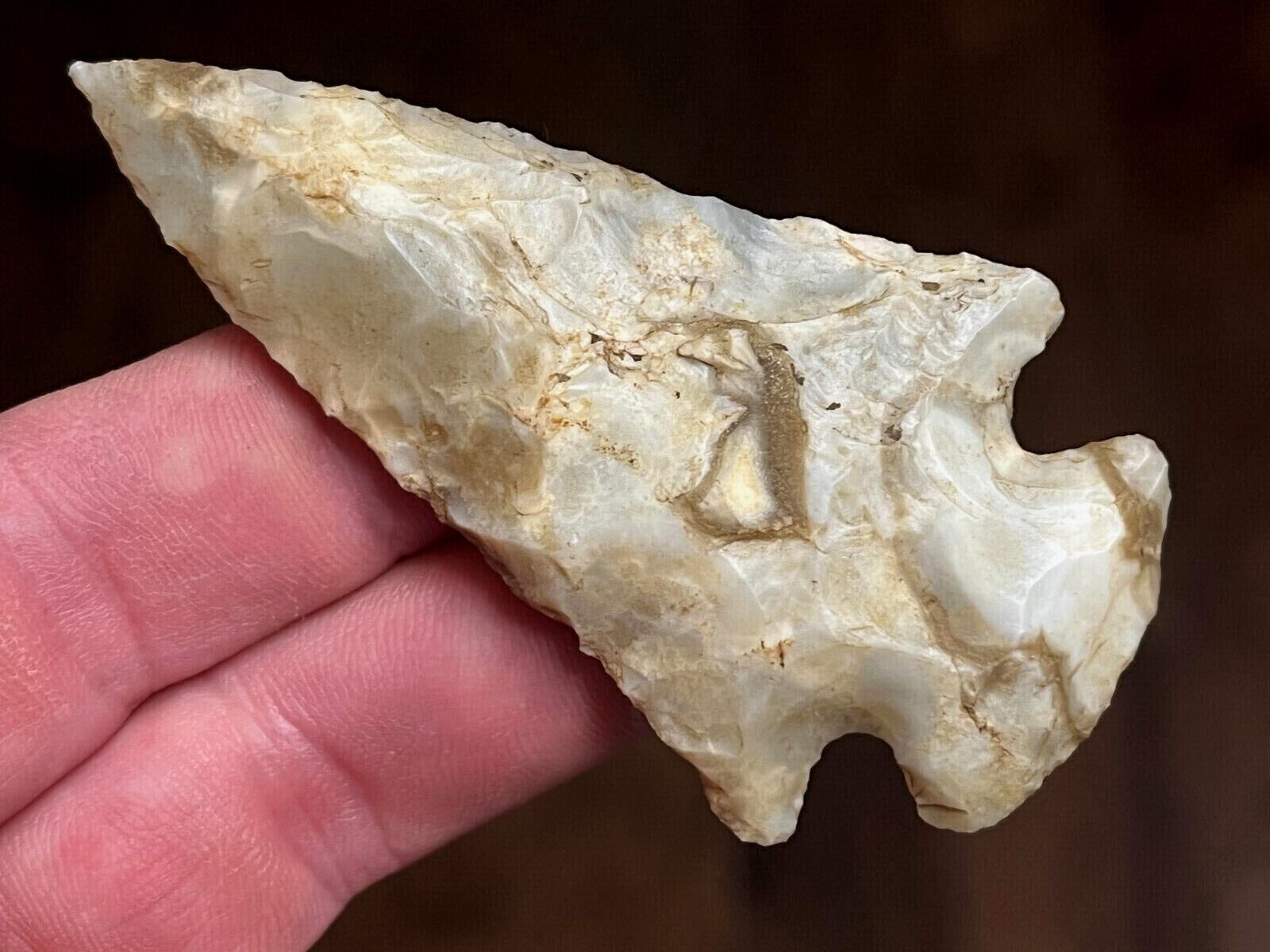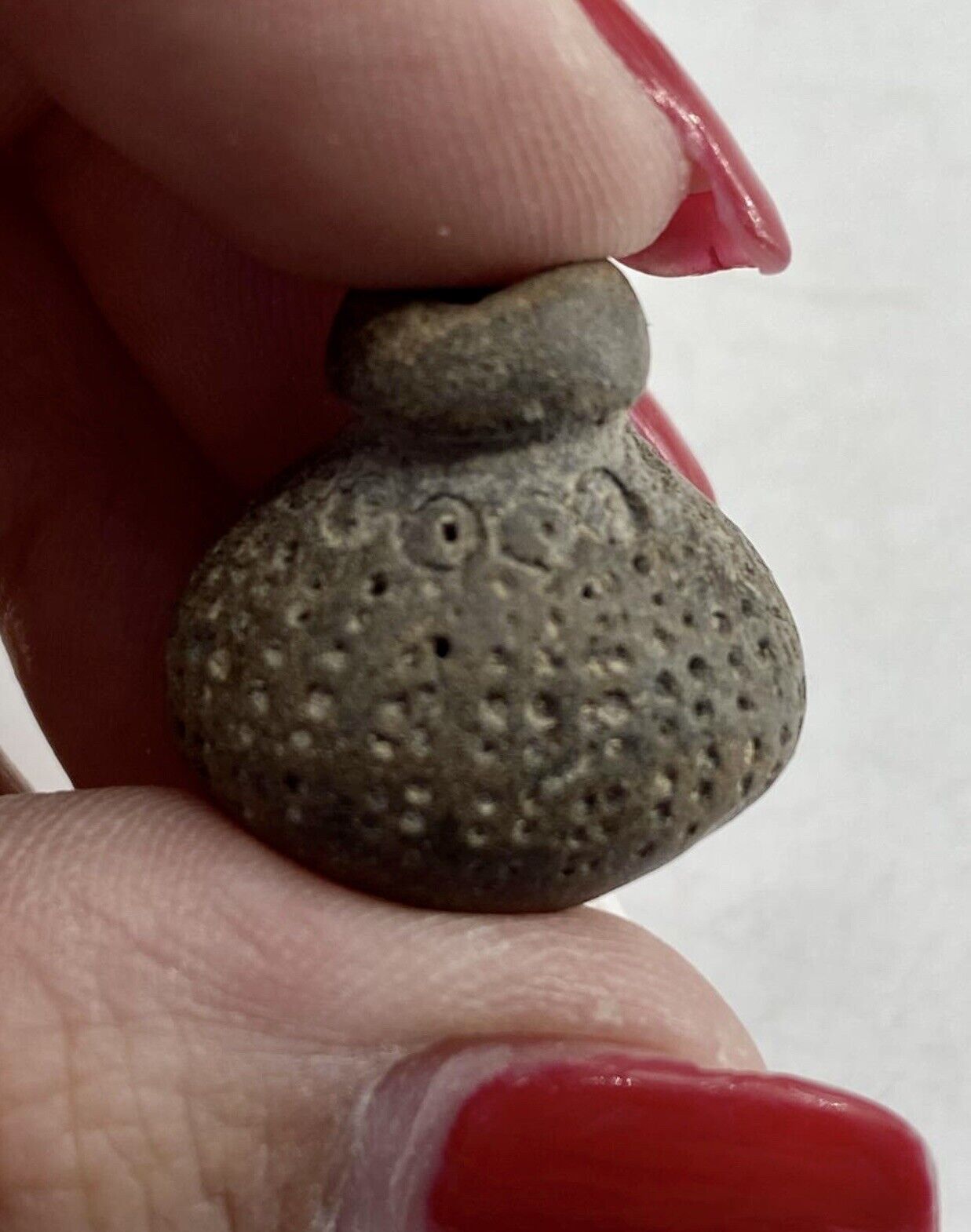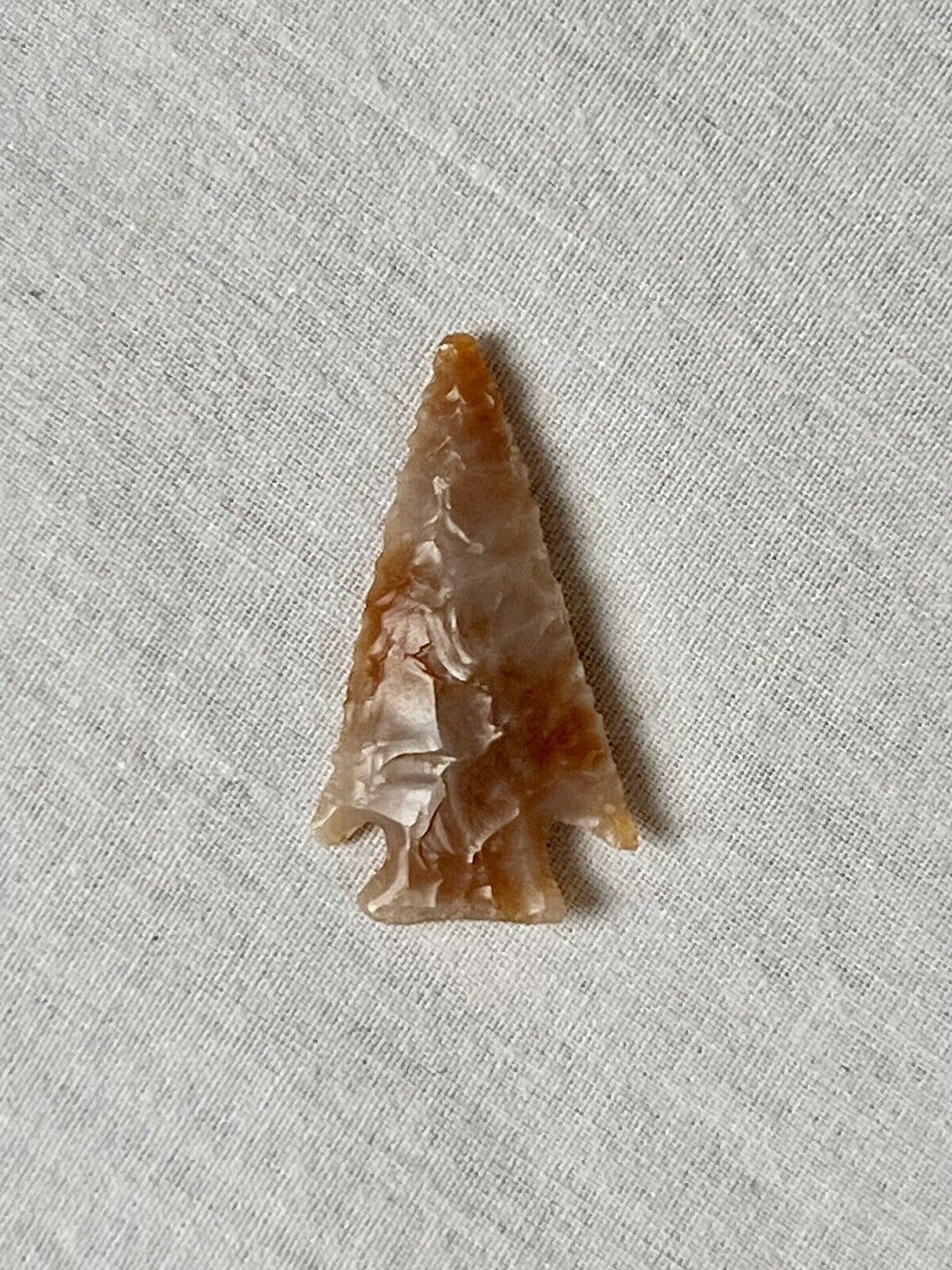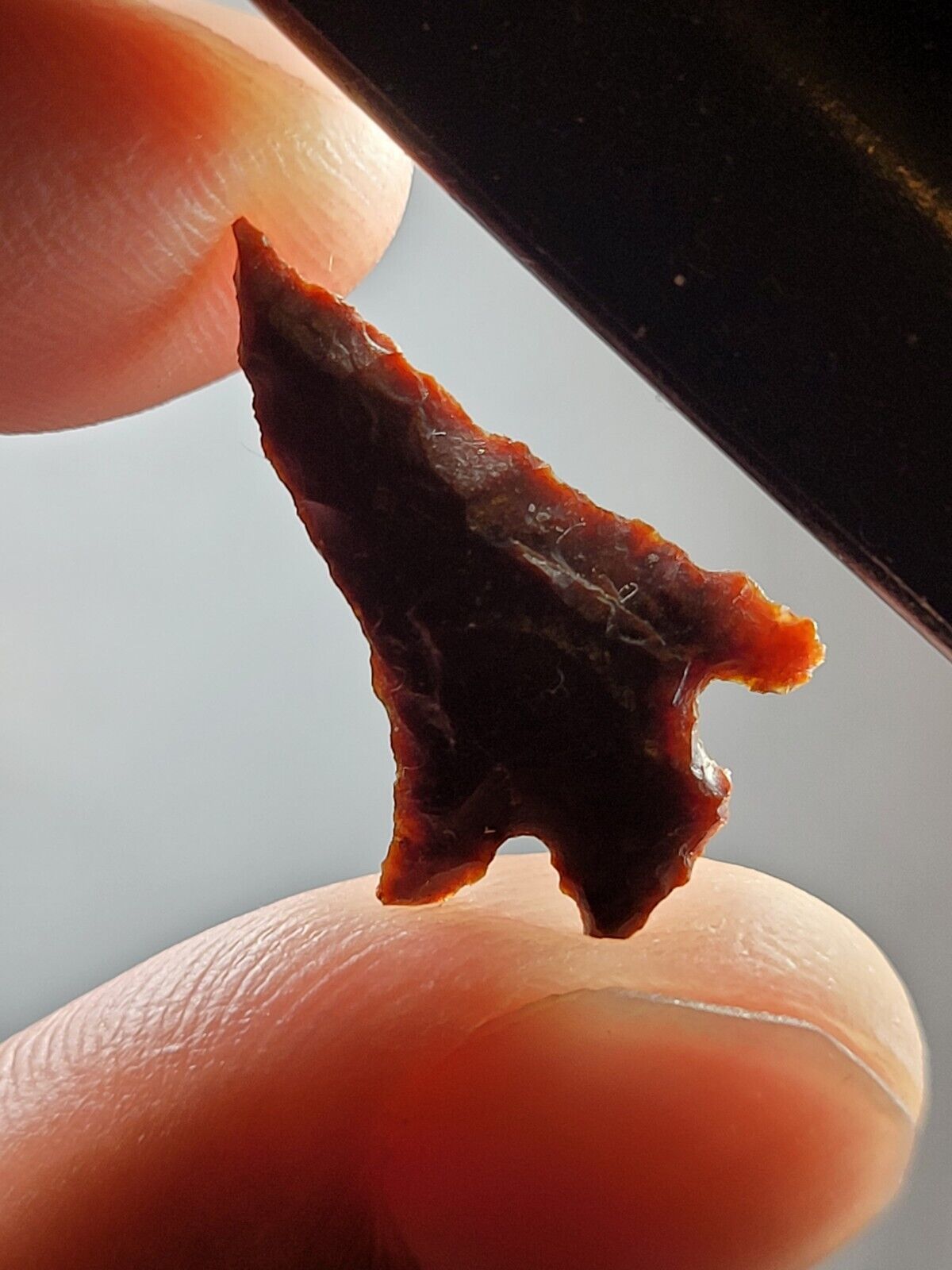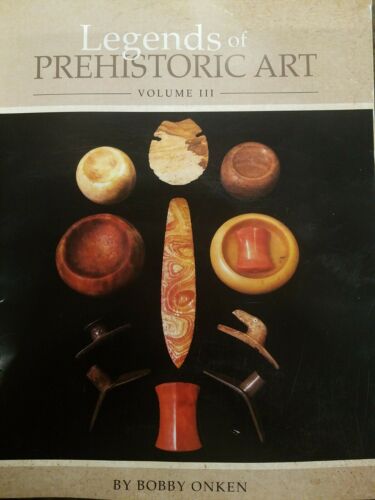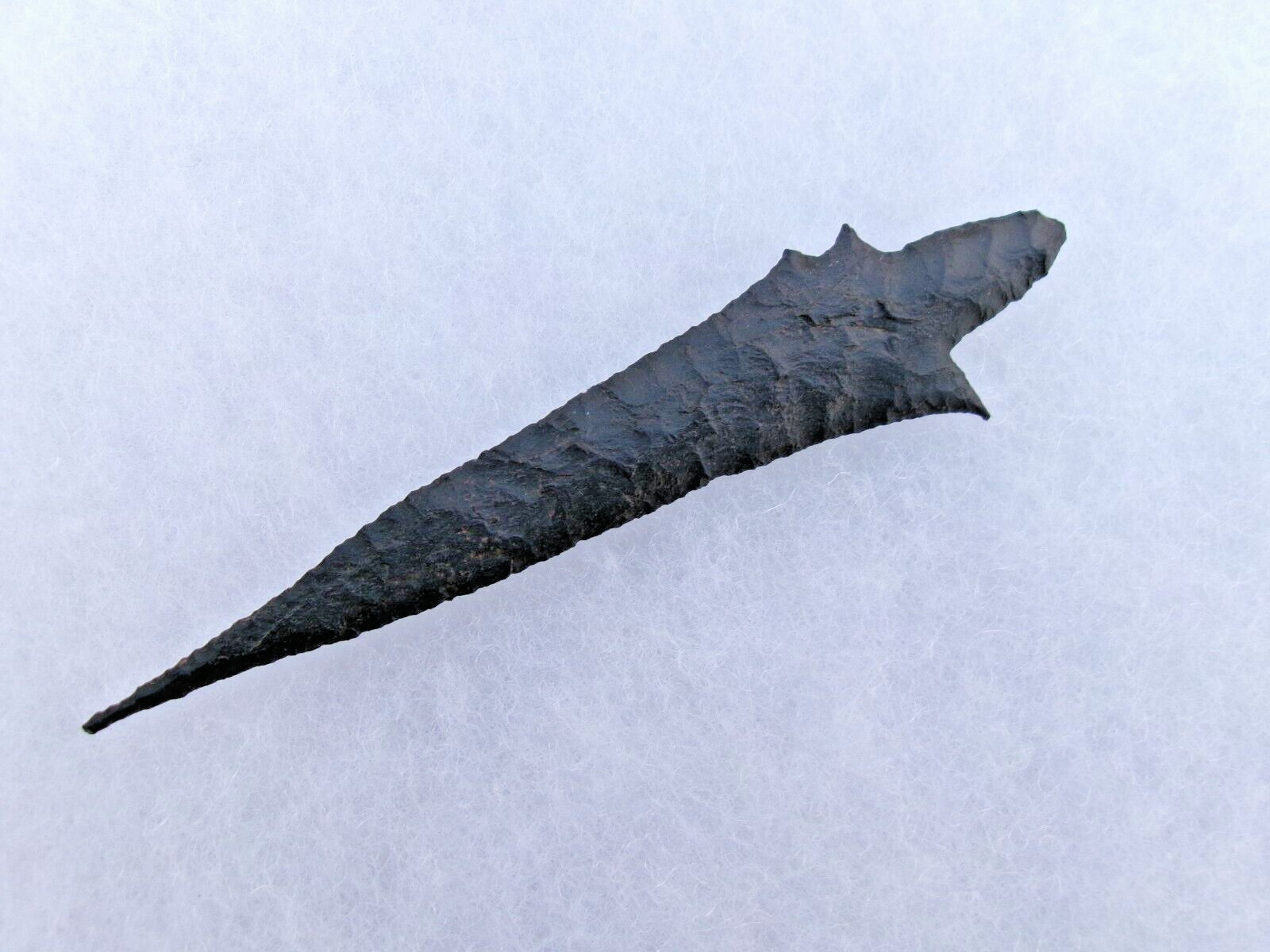-40%
CHERT LANCELOATE/ SAW FOUND AT TULARE LAKE X SEALS
$ 7.91
- Description
- Size Guide
Description
Offered up is a true heart breaker that suffered damage to the tip. it is a heavily serrated lanceolate that is 2 3/4 inches long. The heavy serrations leads me to think it was used as a saw. Just my opinion. This is made from a piece of Monterey chert from the coast. I wonder if it came to Tulare Lake as a finished point or the raw material was traded in? The break is probably the result of a plow ding that brought it to the surface. The pictures are always the best description This was found by Ken Seals who collected on the lakebed during the 1950's-early 70's .This is a nice one for your California collection. S-348I post my auctions on Saturdays and if paid, mail on Monday. All items purchased on Saturday will be combined for .00 to save you money and me time. If you win more than one auction ,wait for a new invoice that will reflect your savings.
You may return this for up to 3 months for any reason. You pay for the return shipping. I leave feedback for people who do likewise, These items are all from my collection. I always leave feedback for those who do likewise.
I use Noel Justice as my main reference .His book is the best on California points. Stone Age Spear and Arrow Points of California and the Great Basin.
Tulare Lake was a magnate for Native Americans with between 15,000-20,000 living in the Tulare Lake Basin at the time of contact because of the abundant food supply .Fish, waterfowl, large freshwater mussels, elk and deer as well as the tule roots were abundant. .At capacity it was well over 30 miles across and the largest lake west of the great Lakes. The artifacts from there are very unique because of all the various influences. varieties from the coast, Great Basin, Sierras and points that are only found in the area. Many are un-typed .Since it was alluvial, washed off the Sierras, there was no native stone. It was all brought in by the N.A.'s
